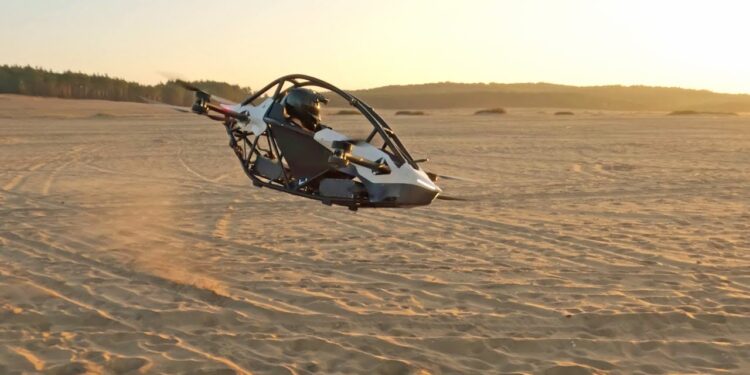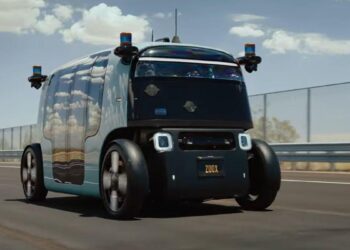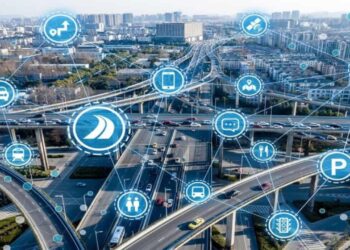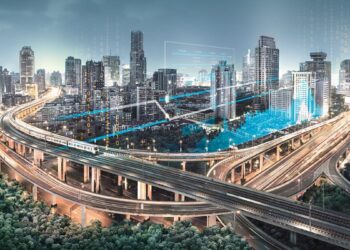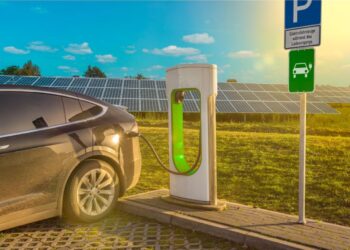For centuries, the dream of human flight has captivated our collective imagination. From the mythical Icarus to Leonardo da Vinci’s visionary designs, the desire to soar through the skies has been a constant in human history. Today, that dream is no longer a distant fantasy. A new era is dawning, one driven by groundbreaking advancements in technology, engineering, and material science. The Personal Flight Device (PFD), once the exclusive domain of science fiction, is on the verge of becoming a reality, poised to revolutionize urban mobility, logistics, and personal freedom. These aren’t just drones for people; they are the next generation of transportation, offering a glimpse into a world without traffic jams, where the sky is no longer a limit but a new frontier.
This comprehensive guide will take a deep dive into the most significant innovations and challenges shaping the PFD revolution. We will explore the different types of devices, the critical technologies that make them possible, the regulatory and safety hurdles that must be overcome, and the new business models they will create. By the end, you will have a clear understanding of why PFDs are not just a technological curiosity but a transformative force that will reshape our cities and our daily lives. The future of personal flight is being built one prototype at a time, and its impact will be felt in every aspect of our world.
A. Types of Personal Flight Devices
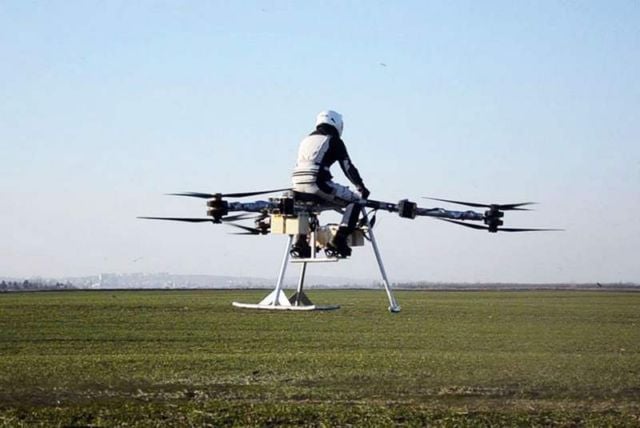
The term “Personal Flight Device” is a broad one, encompassing a variety of different designs and technologies. While the a personal jetpack is the most iconic image, the reality is far more diverse and practical. The most promising PFDs are those that are safe, efficient, and easy to operate.
- A. Multirotor Vehicles: These devices, often resembling a large-scale drone with a seat, are the most common type of PFD in development. They use multiple electric motors and propellers to achieve vertical takeoff and landing (VTOL).
- A. Advantages: Their simplicity and stability make them ideal for urban environments. They can take off and land in a small space, eliminating the need for a runway. Their electric power source makes them quiet and emission-free.
- B. Examples: Companies like Joby Aviation and EHang are developing multirotor devices that can carry one or more passengers. These are often referred to as “air taxis” and are the most likely to be deployed in commercial services in the near term.
- B. Jetpacks and Rocketbelts: This is the classic, iconic PFD. These devices use powerful jet engines or rockets to lift a single person into the air.
- A. Advantages: They offer the ultimate in personal freedom and a truly unconstrained flight experience. They are highly maneuverable and can reach high speeds.
- B. Challenges: They are incredibly difficult to control, require a huge amount of fuel, and are very loud. Their energy inefficiency and the safety risks associated with them make them a less likely candidate for mainstream adoption in the near future.
- C. Single-Seat Vertical Takeoff and Landing (VTOL) Aircraft: These devices look more like a small, futuristic helicopter or plane. They have a single seat and can take off and land vertically, but can also tilt their propellers to fly forward like a plane, giving them a much greater range and speed than a multirotor vehicle.
- A. Advantages: They offer a much longer range and a higher top speed, making them suitable for inter-city travel or longer commutes.
- B. Examples: The Lilium Jet and the Kitty Hawk Flyer are examples of single-seat VTOL aircraft that are designed for personal use.
The variety of designs shows that there isn’t a single solution to the problem of personal flight, but a range of options that cater to different needs and use cases.
B. The Technologies That Make It Possible
Personal flight devices are not a new idea, but the technologies that are making them viable are. A confluence of breakthroughs in several key areas has turned a century-old dream into a modern engineering challenge that is on the verge of being solved.
- A. Electric Propulsion and Battery Technology: The advent of high-density, lightweight batteries and powerful, efficient electric motors is the single most important factor. The quiet, zero-emission nature of electric motors makes them ideal for urban environments, while the continuous improvements in battery capacity are finally providing enough power to get a person off the ground for a meaningful amount of time.
- B. Advanced Materials and Composites: To get a vehicle off the ground, it must be incredibly light. The aerospace industry is leading the way in developing new, lightweight materials like carbon fiber composites and advanced alloys that are strong enough to withstand the stress of flight while keeping the total weight of the vehicle to a minimum.
- C. Autonomous and Fly-by-Wire Systems: The traditional stick and rudder control system is too complex for most people to master. The new generation of PFDs uses “fly-by-wire” systems, where a computer handles the complex stability and control calculations, allowing the user to simply use a joystick or a simple interface to direct the vehicle.
- A. The Role of AI: In the future, these systems will be fully autonomous, using AI to navigate a 3D airspace, avoid obstacles, and land safely. The user will simply enter their destination and the AI will handle the rest, much like a modern-day GPS. This level of autonomy is critical for making PFDs a mainstream form of transport.
- D. Sensor Fusion and Communication: Just like a modern self-driving car, a PFD will need a real-time, 360-degree awareness of its environment. This is achieved through sensor fusion, where data from multiple sensors—like LiDAR, radar, and cameras—is combined to create a single, comprehensive picture of the airspace. V2X (Vehicle-to-Everything) technology will also be crucial, allowing a PFD to communicate with other aircraft, a central air traffic control system, and ground infrastructure.
C. Overcoming the Hurdles

The technological challenges are immense, but the regulatory and societal hurdles are even bigger. For PFDs to become a reality, governments and communities must work together to create a safe, clear, and equitable framework for their operation.
- A. Air Traffic Management for the Urban Sky: The biggest challenge is managing the urban airspace. We have a robust system for managing commercial aircraft, but how do we manage thousands of small, personal flight devices flying at low altitudes over a city? A new, automated, and intelligent air traffic management system will be needed to prevent collisions and ensure public safety.
- B. Regulation and Certification: Aviation is one of the most heavily regulated industries in the world, and for good reason. Before a PFD can be sold to the public, it will have to go through a rigorous certification process to prove that it is safe, reliable, and airworthy. This process is time-consuming and expensive and is a major roadblock to widespread adoption.
- C. Noise Pollution and Public Acceptance: While electric motors are much quieter than jet engines, a fleet of thousands of PFDs flying over a city will still create a significant amount of noise. Overcoming public resistance to noise pollution and the visual impact of a sky full of flying devices will be a major challenge that will require public education and a focus on quiet, efficient designs.
- D. The Infrastructure Challenge: Where will these devices take off and land? And where will they be charged? A new network of “vertiports”—small, urban airfields with charging stations—will need to be built. These vertiports will need to be strategically located for convenience, but the cost and the space required for them will be a significant hurdle for city planners.
D. The New World of Business and Opportunity
The personal flight revolution will not just create a new way to get around; it will create an entirely new ecosystem of businesses and opportunities. The economic impact will be far-reaching, from manufacturing and maintenance to new service models.
- A. Mobility-as-a-Service (MaaS): The most likely business model for PFDs in the near term is a MaaS model. Instead of owning a PFD, you will be able to book one on demand through an app, much like a ride-hailing service today. These “air taxi” services will be a quick and efficient way to bypass urban traffic.
- B. Logistics and Delivery: PFDs will revolutionize the logistics and delivery industries. Small, autonomous cargo drones could deliver packages across a city in minutes, bypassing ground traffic entirely. This could dramatically reduce delivery times and emissions.
- C. Emergency Services: PFDs could be used for a variety of emergency services, from delivering medical supplies to a remote location to providing a quick way for first responders to reach the scene of an accident in a congested urban area.
- D. The Personal PFD: While commercial services will likely come first, the ultimate goal is to create a personal PFD that a consumer can own and operate. This will create a new market for manufacturing, maintenance, training, and accessories, similar to the private aviation market today, but on a much larger scale.
Conclusion
The dream of personal flight is no longer confined to the pages of science fiction; it is rapidly becoming a tangible reality. The confluence of groundbreaking advancements in electric propulsion, autonomous systems, and lightweight materials is making the personal flight device a viable solution to the pressing challenges of modern urban mobility. While the technological hurdles are immense, the regulatory, safety, and societal challenges are even greater. The future of personal flight will be defined not just by what engineers can build but by how we, as a society, choose to integrate this revolutionary technology into our lives.
The journey ahead is a thrilling one. It will be a collaborative effort between visionary entrepreneurs, forward-thinking regulators, and a public that is willing to embrace a new way of moving. The first wave of commercial air taxis and autonomous delivery drones will be a critical step, proving the safety and commercial viability of the technology. These early successes will pave the way for a future where a personal flight device is no longer a luxury but a common and accepted mode of transport. The urban skies, once a realm of imagination, will become a new frontier for mobility, offering a world without traffic jams, where every journey is a seamless, exhilarating flight. By embracing the dawn of personal flight, we are not just solving a transportation problem; we are building a more efficient, more sustainable, and more connected world for generations to come.

